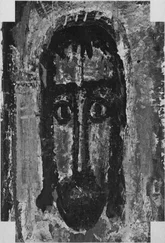Francois-Xavier Meunier - Dual Innovation Systems
Здесь есть возможность читать онлайн «Francois-Xavier Meunier - Dual Innovation Systems» — ознакомительный отрывок электронной книги совершенно бесплатно, а после прочтения отрывка купить полную версию. В некоторых случаях можно слушать аудио, скачать через торрент в формате fb2 и присутствует краткое содержание. Жанр: unrecognised, на английском языке. Описание произведения, (предисловие) а так же отзывы посетителей доступны на портале библиотеки ЛибКат.
- Название:Dual Innovation Systems
- Автор:
- Жанр:
- Год:неизвестен
- ISBN:нет данных
- Рейтинг книги:4 / 5. Голосов: 1
-
Избранное:Добавить в избранное
- Отзывы:
-
Ваша оценка:
- 80
- 1
- 2
- 3
- 4
- 5
Dual Innovation Systems: краткое содержание, описание и аннотация
Предлагаем к чтению аннотацию, описание, краткое содержание или предисловие (зависит от того, что написал сам автор книги «Dual Innovation Systems»). Если вы не нашли необходимую информацию о книге — напишите в комментариях, мы постараемся отыскать её.
Dual Innovation Systems — читать онлайн ознакомительный отрывок
Ниже представлен текст книги, разбитый по страницам. Система сохранения места последней прочитанной страницы, позволяет с удобством читать онлайн бесплатно книгу «Dual Innovation Systems», без необходимости каждый раз заново искать на чём Вы остановились. Поставьте закладку, и сможете в любой момент перейти на страницу, на которой закончили чтение.
Интервал:
Закладка:
A rich economic literature explores the dissemination of knowledge and, following the above presentation, that of technology. Examining this literature in order to analyze dual technological innovation seems worthwhile. The majority of empirical studies on this subject involve patent data. These data related to knowledge flow identification are validated by a wide diversity of application fields. They were notably used to identify geographical transfers of knowledge (Jaffe et al. 1993; Autant-Bernard and Massard 2000; Autant-Bernard et al. 2014) and knowledge flows within research (Ham et al. 1998). Some used them to capitalize on innovation spin-offs (Trajtenberg 1990) or to study the role played by inventors in knowledge transfers (Jaffe 2000). Finally, many works utilizing patent quotations as analysis instruments examine knowledge or economic spin-offs from public research (Jaffe and Trajtenberg 1996; Henderson et al. 1998).
The analysis of technological dissemination between the defense sector and the civilian sector, either within the well-defined framework of duality or within the broader one of technology transfers, involves patent data only to a limited extent. When employed by defense economists, patent data are mainly used to describe the situation within the field itself (Gallié and Mérindol 2015). The works of Chinworth on duality in Japan (2000a, 2000b) are worth mentioning. Using a more thorough and regular approach, the works of d’Acosta et al. (2011, 2013, 2017) deal with duality, and more broadly with technological innovation in the field of defense, using patent data and an approach based on technological classes.
Less directly related to duality, other works using patent data take into account the defense theme in their analyses to show, for example, that technology transfers from public R&D to the market sectors are influenced by the defense character of innovations (Chakrabarti et al. 1993; Chakrabarti and Anyanwu 1993).
In this book, in order to study dual technological innovation through knowledge, two theoretical frameworks are employed. The first is the coherence framework. It was introduced in the 1990s by the works of Teece et al. (1994), who studied company diversification strategies. Coherence analyses originally dealt with the connection between production operations within a company. They were subsequently adapted and enhanced in order to assess the technological coherence of diversified companies (Piscitello 2005), industrial sectors (Krafft et al. 2011) and technological programs (Avadikyan and Cohendet 2005). These studies facilitate the understanding of how knowledge gets structured.
The second framework is the dominance framework. Economic dominance theory (EDT) is used to explore asymmetric relations between various entities interacting in a network. EDT originates in the works conducted by Perroux (1948) on the power between regions and nations in international exchanges. EDT employs a tool, namely influence graph theory (IGT; Lantner 1974), which identifies the dependences and interdependences between entities.
According to Lantner, IGT facilitates the assessment, within any structure that can be represented by a linear system, of the “global” influence that an entity A exerts on an entity B. But the study of this global influence requires consideration of what happens in the rest of the structure. The connections between A and C, D, etc., impact and amplify the direct influence on B (Lantner and Lebert 2015). In this study, IGT is applied to technological knowledge flows in order to better understand their dissemination between civilian and defense sectors.
Adopting a systemic approach, this work reconciles a global analysis framework centered on the concept of duality (Guichard and Heisbourg 2004; Mérindol 2004; Bellais and Guichard 2006; Serfati 2008) with an approach of technologies (Pinch and Bijker 1984; Carlsson and Stankiewicz 1991; Carlsson et al. 2002; Bijker 2010) facilitating the evaluation of their dual potential. The empirical work relies on the systematic analysis of knowledge production (Jaffe 1986; Jaffe and Trajtenberg 2002; Verspagen 2004; Hall et al. 2005) within large defense companies. It employs tools originating in the theory of technological coherence (Teece et al. 1994; Cohen 1997; Piscitello 2005; Krafft et al. 2011; Nasiriyar et al. 2013) and also those resulting from EDT (Perroux 1948, 1973, 1994; Defourny and Thorbecke 1984; Lantner 1972, 1974; Lantner and Lebert 2015; Lebert 2016; Lebert and Meunier 2017).
This leads to a reflection on the role that knowledge and its dissemination plays in dual potential measurement and the characterization of the modes of interaction between the civilian sector and the defense sector in an innovation process.
Endeavoring to understand the mechanisms for dual technological innovation dissemination, this works addresses three main challenges. The first challenge is to define dual technological innovation and propose an analysis framework for its study. To address this challenge, the first essential step is to understand that duality is a relatively fuzzy notion, taking on many characteristics depending on the interpretation (Cowanand Foray 1995; Kulve and Smit 2003; Guichard and Heisbourg 2004; Mérindol and Versailles 2015b). Defense manufacturers assimilate duality to a form of market diversification, while public powers perceive it as a means to relax a budget constraint (Gutman 2001) and at the same time take advantage of new innovation relays; these two examples show that duality is a multifaceted concept. In order to deal with its technological component, while keeping in mind this complexity, the proposed analysis framework relies on a precise meaning of the concept based on the principle of joint military–civilian technological production. In the context of this work, duality differs from technology transfers (Molas-Gallart 1997), and the proximities between civilian and military sectors in technological production play an essential role in dual innovation structuring (Guichard 2004b; Fiott 2014).
The second challenge relates to methodology. It involves designing a set of tools aimed at evaluating the dual potential of technologies. According to the above-mentioned analysis framework, this requires the determination of the joint military–civilian technological production potential. Traditionally, economics defines a technology based on the knowledge it comprises (Carlsson and Stankiewicz 1991). It is to this knowledge, either considered as individual units or as an articulated set, that a technology owes its characteristics. Therefore, the study of knowledge production in civilian and defense sectors makes it possible to measure their capacities to jointly produce technologies that, if not identical, are at least compatible. Moreover, a knowledge-based assessment of this matter has the advantage that it avoids a priori judgment on the potential use of technologies,thus enabling an approach that is both independent from and complementary to that of the expert. It is consequently possible to define a set of tools that measure the dual potential of any technology employing original theoretical frameworks in duality analysis, namely the theory of technological coherence (Teece et al. 1994; Piscitello 2005) and EDT.
The last challenge is to understand the influence of duality on knowledge production. This leads to a repositioning of dual technological innovation in its global environment. Indeed, besides measuring the dual potential of a technology, the challenge is in this case to better understand the roles played by the defense sector, on the one hand, and by the civilian sector, on the other hand, in structuring dual innovation-related knowledge. In fact, designing a technology does not rely only on the production of its internal knowledge, but also on the production of external knowledge. According to Fleming and Sorenson (2001), knowledge production is correlational. Therefore, studying how dual innovation-related knowledge is structured requires an analysis of the knowledge specific to the respective innovation. Furthermore, knowledge that may be useful either upstream of technological development or downstream of knowledge dissemination should be considered. Hence, the definition of the technological environment in which a dual innovation emerges facilitates the understanding of complementarities between civilian and defense sectors, and the description of dual potential depending on the interactions between the studied technology and its technological environment.
Читать дальшеИнтервал:
Закладка:
Похожие книги на «Dual Innovation Systems»
Представляем Вашему вниманию похожие книги на «Dual Innovation Systems» списком для выбора. Мы отобрали схожую по названию и смыслу литературу в надежде предоставить читателям больше вариантов отыскать новые, интересные, ещё непрочитанные произведения.
Обсуждение, отзывы о книге «Dual Innovation Systems» и просто собственные мнения читателей. Оставьте ваши комментарии, напишите, что Вы думаете о произведении, его смысле или главных героях. Укажите что конкретно понравилось, а что нет, и почему Вы так считаете.











